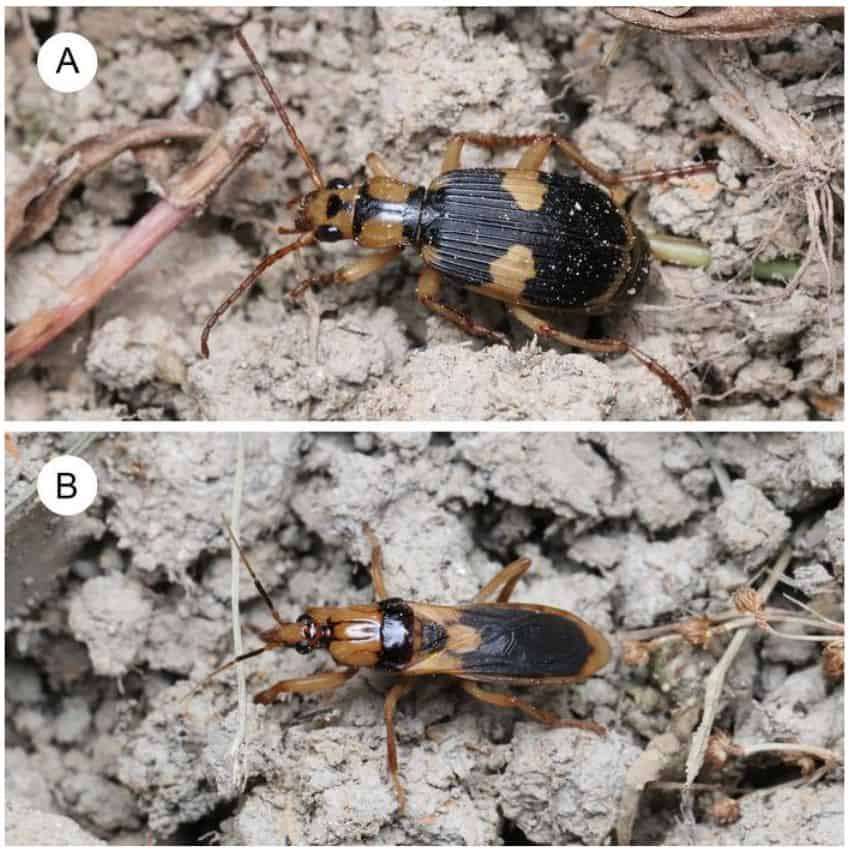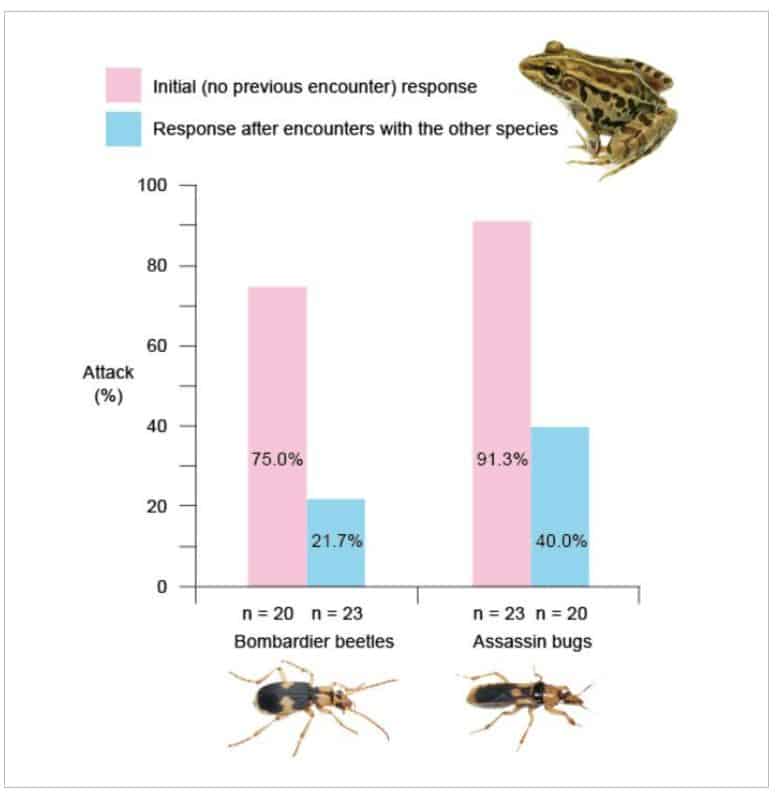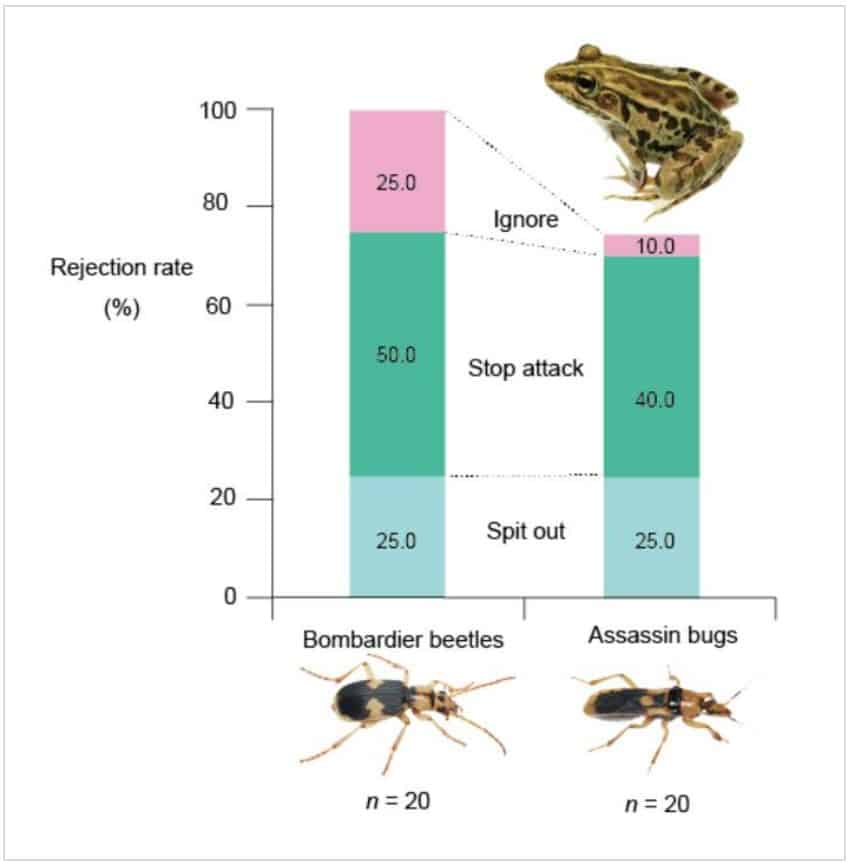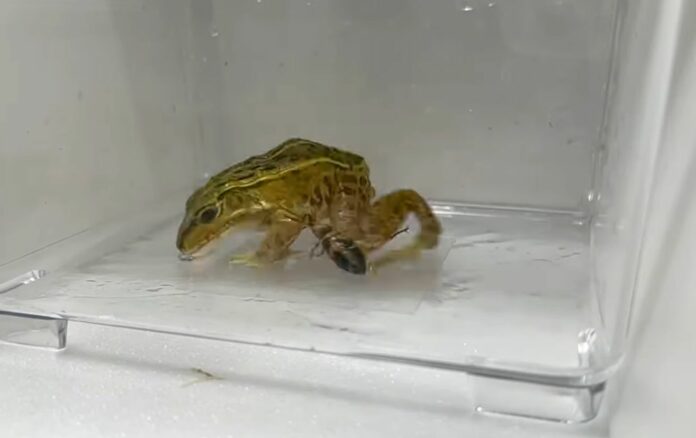Nature’s Deadly Game: A Strange Thing Happens to Predator Infected by Bombardier vs. Assassin Bug
Animals employ a variety of tactics to fend off predators in their environment. Some species, particularly those with robust defenses, exhibit distinct body colorations that are similar to other defended or undefended species, thus establishing mimetic relations. For instance, the bombardier beetle propels toxic substances heated to 100°C to ward off threats like frogs, and its warning colorations further deter potential predators.
Likewise, the Sirthenea flavipes, also known as the assassin bug, displays a noticeable body color akin to the Pheropsophus occipitalis jessoensis, a species of bombardier beetle.
Both insects coexist in the same Japanese habitat, and while the assassin bug utilizes its sharp proboscis as a defense mechanism, the nature of their mimetic relationship remains somewhat ambiguous.

Shinji Sugiura from Kobe University and Masakazu Hayashi from Hoshizaki Green Foundation, both entomologists from Japan, have found that P. occipitalis jessoensis, the bombardier beetle, possesses a more potent defense against a common predator than the assassin bug, S. flavipes.
Their research, which appears in the today’s edition of PeerJ, illustrates how both these insects derive advantage from their mimetic relationship through the shared predator.

In central Japan, the Pelophylax nigromaculatus or pond frog, a known insect predator, shares the habitat with the aforementioned insects and may pose a threat to them in the wild. Sugiura and Hayashi examined the pond frog’s reaction to the bombardier beetles and assassin bugs in a laboratory setting.
Their findings showed that all the frogs avoided the bombardier beetles while 75% steered clear of the assassin bugs, implying a more effective defense mechanism in the beetles. Moreover, the researchers observed that frogs, once introduced to one of these insect species, were less inclined to attack the other.

Specifically, frogs previously exposed to assassin bugs showed a decrease in their attack rate on bombardier beetles from 75.0% to 21.7%. Similarly, prior encounters with bombardier beetles resulted in a reduction in the frog’s assault on assassin bugs from 91.3% to 40.0%.
This indicates that the mimicry relationship between the two insect species could be viewed as mutually beneficial.
Image Credit: Still from the video
